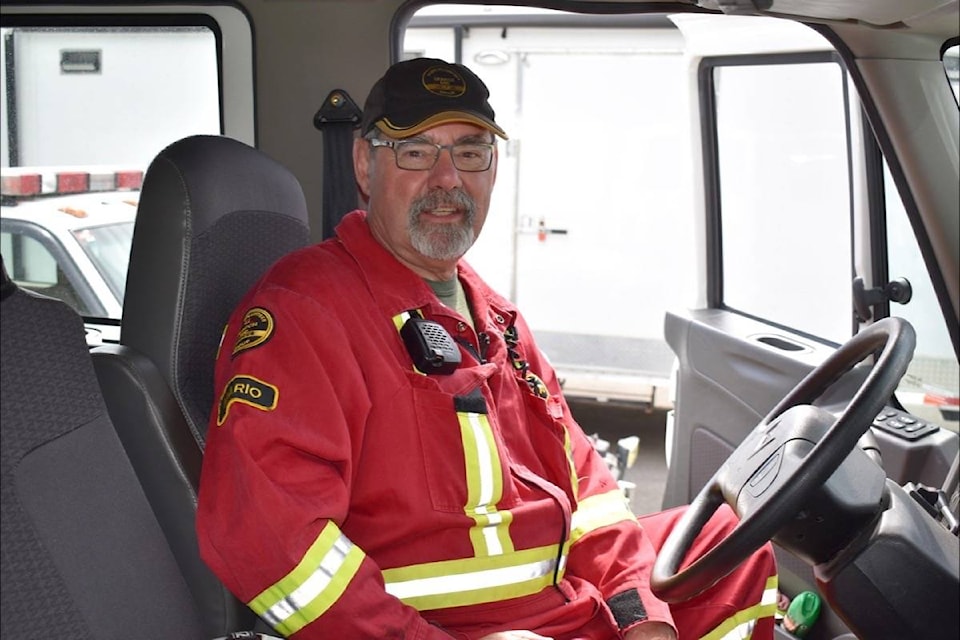Mario Levesque remembers vividly when he knew he was destined to help people.
“When I was, I believe 13 years old, we were at the park at home and there were 11 people that drowned. Basically, they were on a small boat and the boat capsized and they drowned in front of me. She went in the water and tried to save someone and almost ended up drowning,” he said of a tragic boating accident on the Rivière des Prairies in Montreal. The year after, another 11 lives were claimed, again in a boating accident.
This was an experience that stayed with him, right down to the details of what the family who perished were wearing.
“I can tell you exactly what they were dressed. I can tell you the mom was holding the baby’s hand, what they were wearing, light blue dress. No, you don’t forget that,” he said.
“Whether it’s yesterday’s search or the victim that you find, you always remember what they look like, you always remember. And how you deal with them, each individual deals with them differently.”
Levesque, who has been a manager with Hope Volunteer Search and Rescue for five years, says he deals with this reality by remembering two important facts: one, the rescuers did not put the person in the place they are in, and two, they are there to bring the person home.
Bringing someone home could involve bringing them home alive or recovering remains, either way, it is a success Levesque said. The volunteers in Hope cover a massive area — nearly 6,470 square kilometres stretching from the U.S. border to Britton Creek (Highway 5), Jackass Mountain (Highway 1) and Eastgate (Highway 3) — and conduct water, mountain and road rescues.
After his years with Hope’s rescue squad —training new recruits and wearing the president’s hat for a year and a half in addition to being a manager — Levesque is leaving his role and relocating out of the community.
Memories he will take with him include the support he has gotten from the residents, businesses, politicians and the rescue community, as well as the jokes and camaraderie among the rescue team.
Search and rescue has become more collaborative over the past 15 to 20 years, said manager at Kent Harrison Search and Rescue Neil Brewer, resulting in many instances where neighbouring communities conduct searches together. From his time working alongside Levesque, Brewer remembers Levesque’s sense of humor.
“He’s a bit of a character. He likes to joke around a bit and has a good sense of humor,” said Brewer, who has been in search and rescue for 28 years. “Sometimes after the event when things have been resolved we go for a meal together and let the guard down and have a laugh. It’s important to have that sense of camaraderie.”
A little-known job of search and rescue organizations is their work recovering evidence for the RCMP, who are also often the lead agency in the case of missing persons. Staff Sgt. Karol Rehdner with the Hope RCMP knows Levesque as someone who was always seeking to do things better and was very proactive in assisting the police with resources.
“When we worked together we would bounce things off of one another to make it the best product possible,” Rehdner said. “We both had the same end goal and egos were checked at the door,”
Interactions with people he has rescued, as well as family members, will also stay with Levesque. A rescue involving one injured hiker, at Poland Lake, stands out as the hiker being rescued had an excellent attitude.
“She was scared of flying, so when you’re going to be hanging from a basket, you kind of got to put things in perspective. So we told her, once you’re in the basket you can take pictures,” he said. “I always remember the type of patient she was.”
The February 25 crash on the Coquihalla was the largest call Levesque has attended — according to his count the chain-reaction crash involved four tractor trailers, four buses and 11 private vehicles on a snowy, slippery night.
“That was my baptism by fire,” he said. When he got the call, Levesque remembers the dispatcher instructing him to take everything he had for road rescue “and more.”
What he saw when he approached the scene was, in his words, a mess. “You had a tractor-trailer that was on top of another tractor-trailer, busses that were on their sides, cars that were down the ditch,” he said.
Rescuers started from the outsides of the scene working their way in, clearing vehicles and prioritizing who would be looked after first.
As they worked to free a driver of a tractor-trailer who was trapped under another trailer, they had to remove people trapped in cars down an embankment just below the trailers before they could proceed.
“It was a miracle nobody passed away, especially that driver that was underneath because they had to cut him out,” Levesque reflected, comparing the massive crash with no casualties to the tragic two-vehicle collision in Humboldt, Saskatchewan which claimed 16 lives.
Levesque’s 35-year career in the military doing logistics prepared him for his role as a rescuer. His structured approach and attention to detail was a ‘godsend’ said fellow Hope search manager Barry Gannon.
“He’s held Hope Search and Rescue together, given me a hand trying to rebuild it. With a small community, it’s hard and I think he’s done a bang up job and we hate to see him go,” Gannon said.
Although he said he is retiring from search and rescue, Levesque couldn’t help plugging the need for more resources for Hope’s team.
“If you know somebody that’s got a million dollars and doesn’t know what to do with it, Hope Search and Rescue is looking for a new building,” he said
Is there more to this story?
news@hopestandard.com
Like us on Facebook and follow us on Twitter
